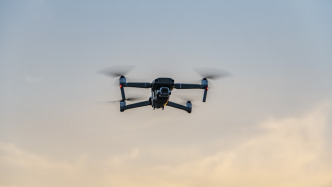
Errors in 'milestone' paper revealing orangutan genome could have implications for orangutan breeding plans. Image credit: Fiona Rogers
Susie, a female orangutan from Sumatra, was the first of her kind to have her genome sequenced. Genome information on it and other orangutans was published in Nature in 2011, setting the stage for hundreds of studies to follow.
But in August, researchers discovered that eight of the genome sequences in the paper had been incorrectly assigned to orangutans. Nature subsequently published corrections by the authors of the paper.
However, the mistakes sparked outrage on social media. Some scientists have warned that the mistakes could have implications for orangutan breeding programs.
It's unclear how this information about swapping identities affects orangutan research. But researchers involved in the new analysis believe the finding may highlight some questions in the scientific community about how exactly these errors are created in the scientific record.
"I think there are mistakes like this in a lot of published papers," says evolutionary biologist Graham Banes, formerly of the University of Wisconsin-Madison. He led a reanalysis of that 2011 paper. "In a way, we were lucky because this only involved misinformation about orangutans. What if this was a biomedical paper and people developed treatments based on published data?"
"This kind of thing can happen very easily," adds Robert Fulton, a genomics scientist at the University of Washington School of Medicine. He was part of the original paper team and co-author of the reanalysis. "The important thing is that the data is correct now."
Referenced detailed genomes are a key tool for biologists conducting research. In 2017, Banes' team used the genome to study the results of interbreeding between different species of orangutans. They noticed that some of the samples had names that did not match the animals' reported sex.
For example, a 2011 paper reported that an orangutan named Dolly was a male. But in the zoo's orangutan records, Dolly is female. Even stranger, Banes found that some of the genomes marked as males lacked the Y chromosome, and a whole bunch of other things didn't make sense.
Banes' team eventually found that the 2011 paper was wrong on all but two of the orangutan genomes, some of which appeared to be the result of typos. In addition, they found that the ID number assigned to a male orangutan sample actually corresponds to a sample from an African pig in the tissue bank. Other samples appear to have swapped identities in the lab.
The 2011 research paper helped pinpoint when the Bornean and Sumatran orangutans diverged into different species and compared their genomes to those of other primates. These conclusions are largely unaffected by this confusion. But Banes said the errors could have implications for other research, including his own.
Banes has used genetic data to advise zoos on captive breeding programs. Zoos try to avoid hybrid orangutan species in captivity, in part to mimic wild populations, he said, and hybrids have high rates of miscarriage and birth defects. When re-examining samples from the 2011 paper, Banes' team found that one of the sequences thought to be a Sumatran orangutan was actually a Bornean orangutan. Unfortunately, the paper incorrectly assigned the genome to other orangutans.
Anthropologist Vincent Nijman of Oxford Brookes University, UK, says zookeepers must stop breeding the offspring with the wrong genome to avoid further interbreeding. However, Nijman also believes that these mistakes have little overall impact on orangutan conservation.
Michael Krützen, an evolutionary geneticist at the University of Zurich in Switzerland, agrees that while these errors are "nasty," their impact on downstream research is likely to be minimal. As researchers race to publish in high-level journals, he thinks the mistakes may be an example of academia's "publish or die" environment leading to "sloppy" work.
Banes agrees that this pressure can lead to errors in papers. But he stressed that scientists cannot be blamed for this, which could undermine future efforts to correct mistakes. "I think any scientist can make these mistakes, but if we all jump out and say, 'Oh my God, how could they be so stupid?' then no one's going to correct anything. It's bad for science."
(Original title "Misassigning 8 Genome Sequence 'Milestone' Papers Is Wrong")




Comments